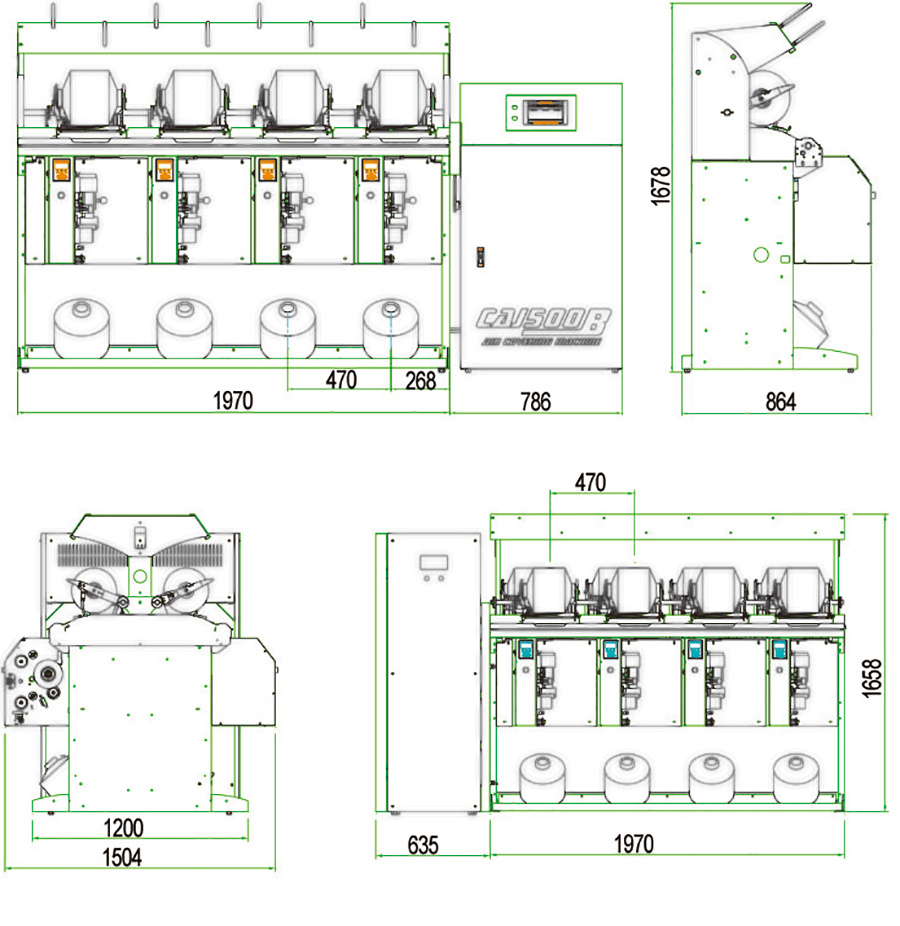As the textile industry shifts towards enhanced comfort, performance, and sustainability, air covered yarn has emerged as a game changer in fabric production. Its unique manufacturing process and properties offer significant advantages over traditional yarns, making it increasingly popular in various clothing categories, particularly those centered on comfort and elasticity.
What is Air Covered Yarn?

Air covered yarn is produced using an innovative air coating technology, which wraps elastic fibers around hollow fibers. This unique construction results in a lightweight, soft, and breathable yarn. The application of this technology has fundamentally transformed the traditional yarn landscape by enhancing both the comfort and functionality of fabrics. Air covered yarn is particularly favored for use in clothing items requiring high comfort levels, such as sportswear, underwear, and loungewear.
Manufacturing Process: A Step Beyond Tradition

Traditional Yarn Production
Traditional yarn is typically manufactured by twisting together fibers, utilizing established spinning techniques. This straightforward process relies on physical forces to bind fibers and create a yarn with specific strength and structure. While effective, it generally prioritizes durability and stability over comfort and breathability.
The Air Covered Yarn Process
In contrast, the production of air covered yarn is more intricate and reliant on precise equipment. The process incorporates elastic fibers entwined with other fibers enveloped in airflow, allowing elastic fibers to wrap around the yarn’s exterior. This requires not only advanced machinery but also an exact control of airflow and fiber application, resulting in a fundamentally different structure. The outer air coating not only renders the yarn lighter but also significantly boosts its breathability and overall comfort.
Structural Differences: A Comparison

Traditional Yarn Composition
Traditionally spun yarns may consist of single or blended natural or synthetic fibers, forming a relatively simple structure. The focus here tends to be on strength and durability, often sacrificing comfort and breathability. Conventional fibers are typically tightly twisted, which restricts air permeability and limits comfort, particularly during prolonged wear.
Composite Structure of Air Covered Yarn
In stark contrast, air covered yarn boasts a composite structure, featuring a central layer of air enveloped by interwoven fibers. The air coating enhances the yarn’s lightness and elasticity, allowing it to retain its softness under tension. The outer elastic fiber layer delivers superior stretch and resilience, significantly improving comfort compared to conventional yarns, especially when worn for extended periods.
Performance Advantages of Air Covered Yarn
Enhanced Comfort and Softness
The structure of traditional yarn is inherently stiff, with comfort largely contingent upon the fiber type and weaving technique employed. As a result, traditional yarns can feel restrictive during prolonged wear. In contrast, air covered yarn, with its outer elastic fiber, offers a soft touch and natural elasticity. This makes it particularly well-suited for close-fitting garments, allowing the wearer to move freely and comfortably.
Improved Breathability and Moisture Management
Breathability in traditional yarns is often dictated by the type of fiber used; for instance, cotton yarns are known for their breathability, while synthetic fibers like polyester can fall short in this area. As a result, many traditional fabrics may prove inadequate in hot weather or during intense physical activity, raising discomfort levels.
Air covered yarn addresses these issues through its unique design, which includes countless microscopic pores formed by the air coating. This design facilitates unrestricted airflow between the fibers, thereby significantly increasing breathability. Regardless of the garment type—whether sports apparel or casual wear—air covered yarn enhances air circulation and moisture control, keeping the skin dry.
Durability and Wrinkle Resistance
Traditional yarns are generally sturdy and suitable for wear-resistant fabrics, yet they can be prone to wrinkling and deformation due to frequent use and washing. Air covered yarn, however, exhibits superior durability and wrinkle resistance. Its elastic nature helps maintain its shape even after repeated wear or laundering, allowing it to retain an appealing appearance over time.
Environmentally Friendly Options
Growing environmental awareness has driven consumers to seek out sustainable clothing choices. Traditional yarns, particularly those derived from synthetic fibers, can be energy-intensive to produce and generate significant carbon emissions.
Air covered yarn is often a more eco-friendly choice due to its lightweight air coating technology, which requires fewer raw materials and less energy in production. Moreover, many variants of air covered yarn are crafted from recyclable materials, aligning with sustainable development goals and consumer demand for environmentally responsible options.
Key Advantages of Air Covered Yarn
Comfort and Optimal Elasticity
The elastic fiber layer coating air covered yarn delivers remarkable stretchability, making it an ideal choice for various garments. Whether used in athletic wear, casual clothing, or loungewear, air covered yarn ensures a comfortable experience that accommodates movement without restriction.
Outstanding Breathability and Moisture Management
The hollow structure of air covered yarn encourages air circulation, dramatically enhancing breathability. This feature is especially beneficial during warmer climates or physical activity, as the yarn effectively absorbs and dissipates moisture, keeping the skin comfortable and dry compared to traditional yarns.
Long-lasting Durability and Wrinkle Resistance
Air covered yarn’s flexible structure allows it to resist wrinkling and deformations often seen in traditional yarns, ensuring it looks smooth and fresh even after extensive use or multiple washes.
Environmental Considerations and Antimicrobial Properties
A number of air covered yarns utilize environmentally friendly materials that cater to modern sustainability concerns. Additionally, these yarns often exhibit excellent antibacterial properties, minimizing odor and making them suitable for sportswear and intimate apparel that necessitates frequent washing.
As the textile industry continues to pivot toward innovation and environmental responsibility, air covered yarn stands out as a leading choice, offering unmatched durability, comfort, and practicality across various clothing applications.



